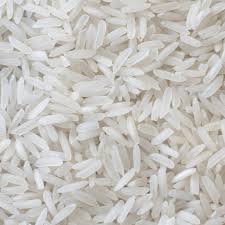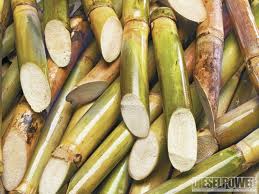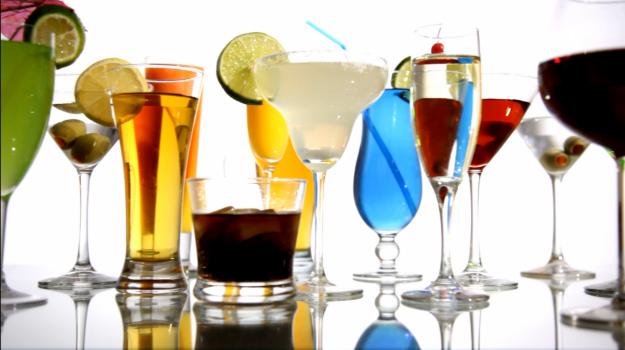Other News From The STAR-K
STAR-K CERTIFICATION

Other News From The STAR-K
STAR-K CERTIFICATION

Published Spring 2008
If you have ever left cookies in the oven a little too long, and they became stuck to the pan, you know what a frustrating experience it can be. Imagine multiplying that feeling hundreds or thousands of times, and you will begin to understand one of the major problems that commercial bakeries and food producers face all the time. To avoid this problem, food manufacturers use release agents to grease the pans. These agents are frequently found in a spray form, like PAM, and must always be kosher certified. Paper pan liners may also be used as release agents, particularly in bakeries. They provide more consistent browning and baking with no added fat or calories, and require less clean-up. Pan liners are also used by candy makers, and may be used as cupcake holders or wraps for frozen gefilte fish. Consumers are also discovering […]

Published Spring 2008
In an energy driven world with limited fuel resources, and a public that is totally enamored with its automobiles, industry is constantly looking for inexpensive new sources of alternative fuel. Biodiesel fuel is one answer. Biodiesel is a chemical process that separates vegetable oil or animal fats into two parts: methyl esters – which is another name for biodiesel, and glycerin. The biodiesel is then blended with alcohol to make biodiesel blends that can be used as a substitute for diesel fuel or other fuel substitutes.

Published Spring 2008
One of the best known halachos of kashrus is that one may not eat meat and milk together. One of the reasons that kosher symbols incorporate a ‘D’ onto the kosher certification is to notify the consumer that the product may not be eaten together with meat, or within six hours after eating meat. Similarly, products containing meat as an ingredient will state “meat” next to the Star-K or other kosher symbol.

Other News From The STAR-K
STAR-K CERTIFICATION
Announces Monthly TeleKosher Conference Program for Local Kashrus Agencies

Published Summer 2008
It has been touted as nature’s most versatile food. There is no grain that feeds more people worldwide, and can boast that it is free of gluten and allergens. When the Gemara in Brachos discusses the blessings that are made before and after eating this grain, the mnemonic used to remember the Gemara’s conclusion is Amen,אמן : “נפשות ” , “מזונות ”, “אורז ” – “Orez”, “Mezonos”, “Nefashos”. If you haven’t guessed by now, the grain we are discussing is Oryza Sativa, otherwise known in Talmudic terms as 1 “Orez“, “אורז ”. We know it simply as rice.

Published Summer 2008
It is written in our Torah, “Ubosor basodeh treifa lo socheilu” (Shmos 22:30), it is forbidden to eat treif meat. While the expression “treif” has become the universal connotation for food that is not kosher, in truth, the word treif specifically refers to an animal whose flesh was torn or ripped. Technically speaking, if a kosher species of animal or fowl was attacked by a predator, the meat of the victim may be deemed treif, non-kosher. However, the meat of an animal improperly kosher slaughtered is not treifa, it is called a neveila. Technically, meat of a non-kosher animal species is the meat of a temeiah. Yet, the term “treif” has found its way through the portals of the slaughterhouse, as well as the aisles of the non-kosher meat section of the supermarkets. No matter what the name, all of these categories of meat […]

Kashrus Kurrents Summer 2008
Inaugural Issue: Shailos From The Institute Of Halacha
Kashrus Kurrents is proud to launch a new column, “Insights from the Institute”. In this regular feature, Rabbi Mordechai Frankel will share with our readership intriguing shailos from his email inbox. The following is a sampling of the types of interesting questions that will be addressed in future columns.

Summer 2008
The Mishnah teaches us, “appoint for yourself a rav,” a Torah guide from whom you can acquire clarity through wisdom. But, what happens when you do not have a personal rav, or you live in a large Jewish community but your Rav is unavailable and time is of the essence for your halachic query?
STAR-K realizes that there is no substitute for a person’s own rav. In an effort to offer a possible solution, it has launched its Institute of Halacha as a public service. Over the years, the agency’s Kashrus Hotline has answered generic halachic questions from kosher consumers the world over, including inquiries regarding the kosher status of foods and certified Sabbath mode appliances. The formation of a separate official division within STAR-K testifies to the need for addressing these issues.
The Institute of Halacha is directed by HaRav Mordechai Frankel, under the guidance of HaRav Moshe Heinemann, STAR-K’s […]

Other News From The STAR-K
STAR-K CERTIFICATION
TeleKosher Conference Program for Local Kashrus Agencies

Published Fall 2008
What do Plano, Texas; Thornhill, Ontario; and Olney, Maryland have in common? They are just some of the hometowns of STAR-K’s fifth annual Kashrus Training Seminar participants.

Kashrus Kurrents Fall 2008
Q: Does bishul akum apply to food cooked in a microwave?

Published Fall 2008
Part I – A Trip to the Otzer Bais Din
Dateline: Erev Shabbos Kodesh, Parshas Balak, 8 Tammuz
Place: Geula, Yerushalayim

Published Fall 2008
The mitzvah of shmitta poses many challenges for those who live in Eretz Yisrael. The main challenge, of course, is for the farmers. However, the consumer has his challenges, as well. It is always preferable to purchase produce from stores that have reliable kosher certification to ensure that there are no halachic problems. If there is no such store available, one must be certain not to transgress the laws of shmitta in the purchase, consumption, or interaction with shmitta produce. These are the different categories of halachos that one has to take into consideration:

Other News From The STAR-K
Star-K Kashrus Training Program

Kashrus Kurrents Winter 2008
Q: My freezer has an ice making machine, which has an arm that rises as ice is produced and lowers when ice is removed. I generally turn the machine off before Shabbos by lifting the arm until it is fully raised. If I forget to do this, can I remove ice on Shabbos from the ice maker?
A: There are various types of ice maker machines available, and they do not all work in the same way. However, many of the commonly available models employ the following mechanism. The ice making process begins when the ice maker signals the water valve to open, and a specified amount of […]

Published Winter 2008
To hear a comprehensive shiur on Birchas Hachama, click here.
Listen to a teleconference interview about Birchas Hachama, click here.
To see Sefer Shaarai Zmannim referenced in this article, click here.

Published Winter 2008
Olive oil, the liquid gold of the ancients, was touted for its nutritional, medicinal, and cosmetic value. As a fuel, olive oil illuminated the home; as a food ingredient, it was a feast to the palate. Olive oil production is one of the world’s oldest industries. Interestingly, much of this ancient industry has not changed over the millennia.

Other News From The STAR-K
Star-K Kashrus Training Program-NOW ACCEPTING APPLICATIONS

Other News From The STAR-K
STAR-K CERTIFICATION
TeleKosher Conference Series

Kashrus Kurrents Summer 2009
Q: May one enter a non‐kosher restaurant to get a drink of water, use the restroom or attend a business luncheon? If a person does enter such an establishment, may he eat kosher items such as whole fruit? May one buy a cup of coffee at a non‐kosher facility, such as a highway rest stop or Starbucks?

Published Summer 2009
Those of us who remember the famous marketing jingles of years past certainly recall the memorable multitudes of people locking their arms together while singing the praises of a soft drink, “What the world wants is the real thing!” Today, that exclamation resounds throughout the beverage industry while most of the world is looking for the healthy, natural, nothing artificial, real thing … others just want something yummy.

Published Summer 2009
It is noteworthy that in both Jewish and secular sources, the first recorded references to cane sugar are attributed to Jewish kings. In Shir HaShirim1, Shlomo Hamelech writes “Yaari Im Divshi,” “My forest with my honey.” Some commentators2 deem this to be referring to cane sugar and deduce that sugar canes are considered trees. Secular sources indicate that cane sugar was first used by man in Polynesia, and from there it spread to India. Darius of Persia invaded India, where he found “the reed which gives honey without bees”. Darius was the son of Achashveirosh and Esther[...] Read More

Other News From The STAR-K
UPCOMING STAR-K PROGRAM
to Enhance Kashrus Awareness for Mashgichos

Kashrus Kurrents Fall 2009
Q: I had a bottle of wine stored in the shelving unit on the door of my refrigerator. I was in the kitchen, and I saw my non-Jewish hired help open the refrigerator. She knows that she is not allowed to touch my wine, but did not pay attention to the fact that opening the refrigerator moves the wine on the door. Can I still drink the wine?

Published Fall 2009
Introduction:
Since the appearance of the first Star-K approved liquor list over 12 years ago, the liquor industry has become visibly spirited, sophisticated and very high profile. As society moves in that direction, so has the kosher consumer. Whether or not this is meritorious is not for us to editorialize. However, baruch Hashem, life cycle simchos continue to abound, and a hearty l’chaim is still an integral part of sharing in one’s simchos. Briefly, Kashrus Kurrents wants to update its readership concerning the past and current trends that have taken place, as well as how we arrived at our conclusions, under the direction of our esteemed Rav Hamachshir, Harav Moshe Heinemann, shlita.

The Reviews are In:
STAR-K’s Mashgicha Enrichment Program is a Big Hit

Kashrus Kurrents Winter 2009
Q: I would like to buy a warming tray that has been manufactured for the Shomer Shabbos community. It is a glass covered warming tray and has a variable temperature dial with a removable knob. It can be set at a minimum temperature of 110 0F and a maximum temperature of 230 0F. It has a sticker on it stating that it is intended solely for the reheating of cooked foods and is not intended to be used for cooking. How may this tray be used on Shabbos?
A: In order to answer this question, one must have an understanding of the Rabbinic prohibitions of shehiyah and chazarah. The parameters of these two prohibitions differ for Ashkenazim and Sefardim. This response will explain the halachah as it applies to Ashkenazim.
Shehiyah: Shehiyah is the act of placing food on an open flame before the onset of Shabbos […]

Published Winter 2009
One of the most beautiful scenes in Yiddishkeit is the family gathered around the table for Kiddush, a special moment for which we wait all week. On Yom Tov, the beautiful melody1 ushers in each of the Shalosh Regalim with much excitement.

Other News From The STAR-K
Star-K 7th Annual Kashrus Training Program
Now Accepting Applications